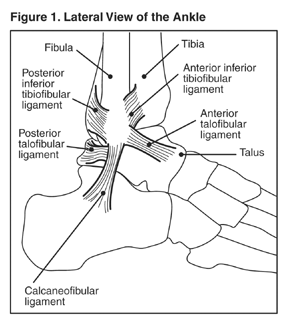|
For the next week, we will be focusing on and learning about different articulations (joints) in the human body. Furthermore, we will start the muscular system soon and having a working understanding of the different articulations, especially amphiarthrosis and diarthrosis joints, will help you understand gross muscle anatomy and movement much better. This post is about sprains, specifically an ankle sprain, and connects well with lecture and laboratory. Further at the bottom of this post, I've collected a few good resources on sprains if you are interested. SprainsEverybody can relate to twisting their ankle, limping around, and dealing with a sprain. Go ahead, think about the last time you twisted your ankle and start to picture the tibia, fibula, and calcaneous bone that we have already gone over. What happened? What causes you to limp? Why does the ankle become inflamed and why do most sprains take so long to heal? First, what is a sprain? A sprain occurs when ligaments are stretched to the point where some of the collagen fibers are torn, but ultimately the entire ligament remains intact. Let's look at the gross anatomy of the ankle joint. So lets look at some of possible ligaments involved in a sprain: The Posterior inferior tibiofibular ligament Remember to break down the roots of the words:
Quick Review
Resources on Sprains
0 Comments
Your comment will be posted after it is approved.
Leave a Reply. |
AuthorMy name is Sean Kent and I teach Anatomy and Physiology at Massasoit Community College. This blog will provide different study tips, recent news articles, and scientific research that relate to the course. ArchivesCategories
All
|

 RSS Feed
RSS Feed
